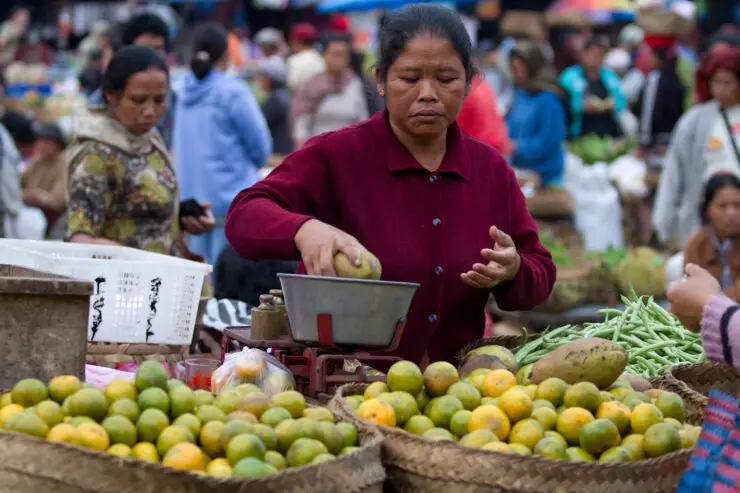As an Amazon Associate I earn from qualifying purchases. Please read the disclaimer for more info.
Are you looking for the perfect burst of tropical sweetness? Then you have to try the 21 scrumptious Indonesian fruits that have tantalized tastebuds around the world.
From snake fruit and rambutan to rose apple, explore a rich variety of exotic flavors from these islands that have been appreciated for centuries.
With such an abundance of unique and flavorful tropical fruits, it’s no surprise that Indonesia is known as a paradise for fruit lovers.
The fruit salads are amazing!
Embark on a Journey of Taste with These 21 Indonesian Fruits!
- Snake Fruit (Salak)
- Dragon Fruit (Buah Naga)
- Passion Fruit (Markisa)
- Rose Apple (Jambu Air)
- Pineapple (Nanas)
- Custard Apple (Silik)
- Star Fruit (Belimbing)
- Ambarella Fruit (Kedondong)
- Mango (Mangga)
- Guava (Jambu Biji)
- Banana (Pisang)
- Jackfruit (Nangka)
- Durian (Duria)
- Tamarind (Asam Java)
- Mangosteen (Manggis)
- Langsat (Duku)
- Soursop (Sirsak)
- Rambutan (Kapulasan)
- Papaya (Papaw)
- Longan (Lengkeng)
- Coconut (Buah Kelapa)
Snake Fruit (Salak)
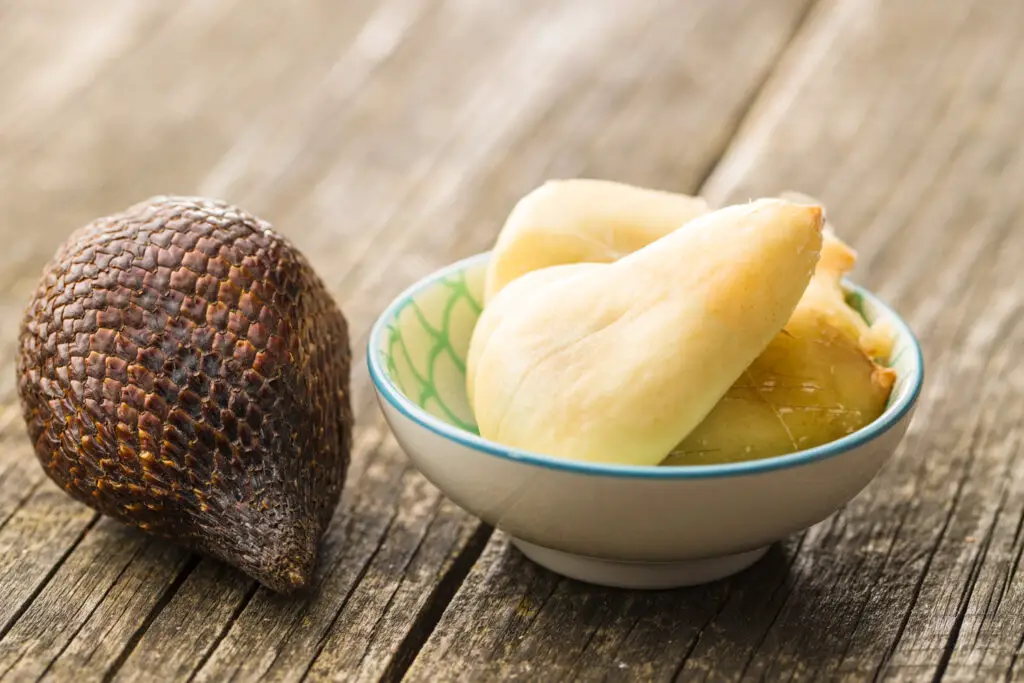
If you’ve never tried snake fruit, you’re in for a treat.
Also known as salak, or snakeskin fruit, these Indonesian fruits are a delicacy across the archipelago.
The fruit gets its unusual name from its scaly exterior, which resembles a snake’s skin.
But don’t let the appearance intimidate you – once peeled, the inside reveals sweet, juicy flesh with a texture similar to an apple.
Many people describe the flavor of snakeskin fruit as a mix between an apple, pineapple, and banana.
The dark brown snake fruit is a source of vitamins and minerals, making it delicious and one of the healthy local fruits.
Related Post: Best Indonesian Cookbooks
Dragon Fruit (Buah Naga)
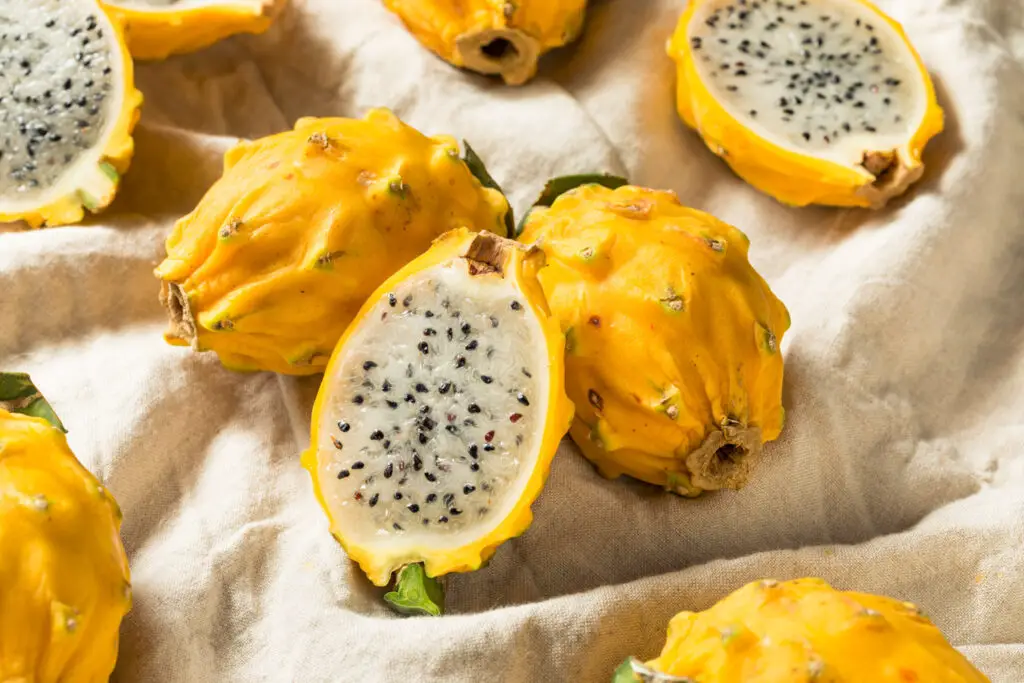
Dragon fruit is a sweet fruit that originates from Central America but has now spread across the world, including Indonesia.
Also known as pitaya, these Indonesian fruits have vibrant pink or yellow skin and green scales resembling a fire-breathing dragon.
Indonesia’s climate is perfect for producing high-quality dragon fruit, known for its sweet and juicy flavor with tiny black seeds that add a slight crunch.
Dragon fruit, sometimes referred to as strawberry pear, is delicious and packed with numerous health benefits, such as improving digestion, boosting immunity, and aiding weight loss.
Indonesian farmers have been cultivating dragon fruits for many years, and it has become a popular fruit nationwide.
Related: Rawon Recipe – Traditional Indonesian Soup
Passion Fruit (Markisa)
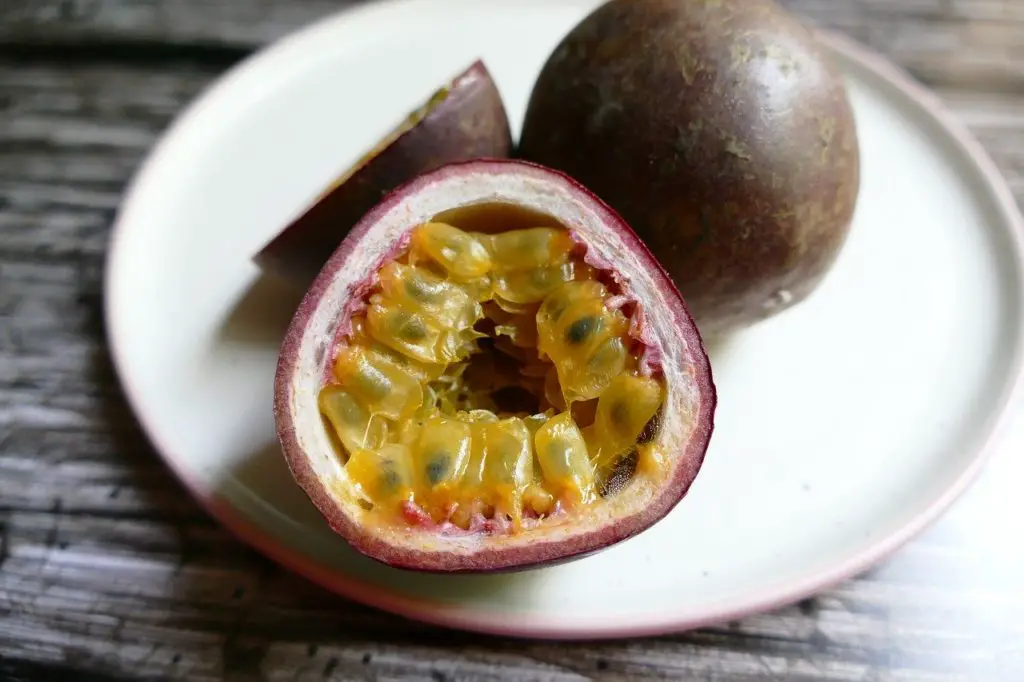
This small but mighty fruit is bursting with flavor, perfectly balancing sweet and tart notes.
The passion fruit’s vibrant purple hue and unique appearance make it easily recognizable, but the taste truly sets it apart.
Whether eaten on its own or used in desserts and beverages, the yellow flesh of the passion fruit, which includes numerous edible seeds, adds a delightful tropical twist to any dish.
Indonesians have mastered the art of incorporating passion fruit into their cuisine, making it a staple ingredient in many traditional dishes.
The yellow passion fruit is often used as a base for syrups.
Related Post: 15 Delicious Fruits in Bali
Rose Apple (Jambu Air)
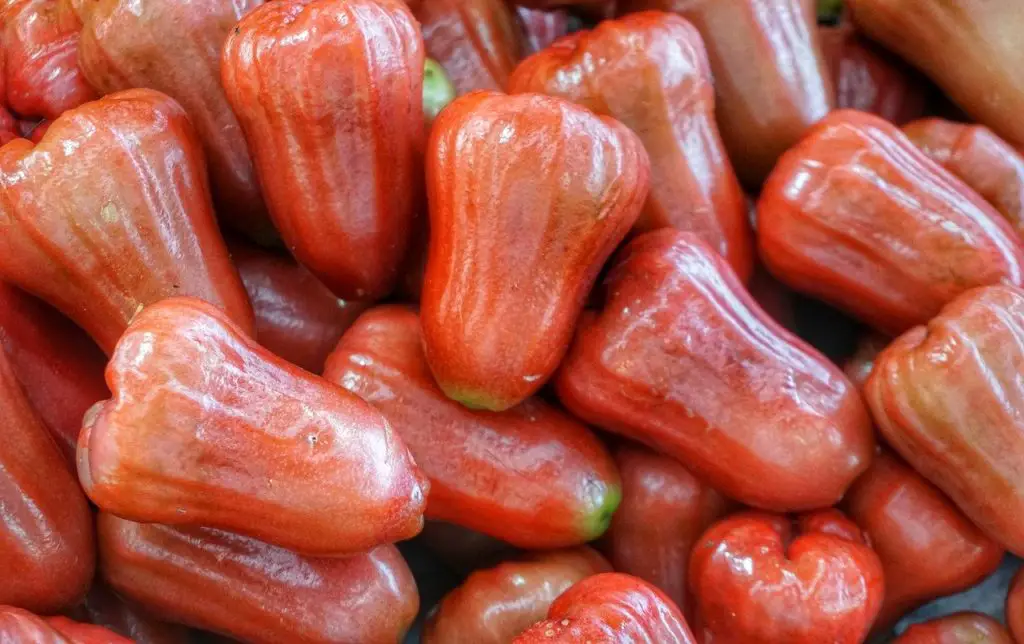
Also known as jambu air, these Indonesian fruits boast a vibrant pink or green exterior with crisp, juicy flesh inside.
It has thin and waxy skin with a mild, slightly sweet flavor and a refreshing, crisp texture that makes it perfect for a hot and humid day.
Locals often enjoy this fruit on its own or as part of rojak, a dish with ingredients such as chili powder, shrimp paste, lime juice, or even soy sauce.
Whether you’re a seasoned traveler or a first-time visitor, trying rose apples in Indonesia is a must-do experience that will give you a glimpse into the country’s diverse culinary offerings.
Pineapple (Nanas)
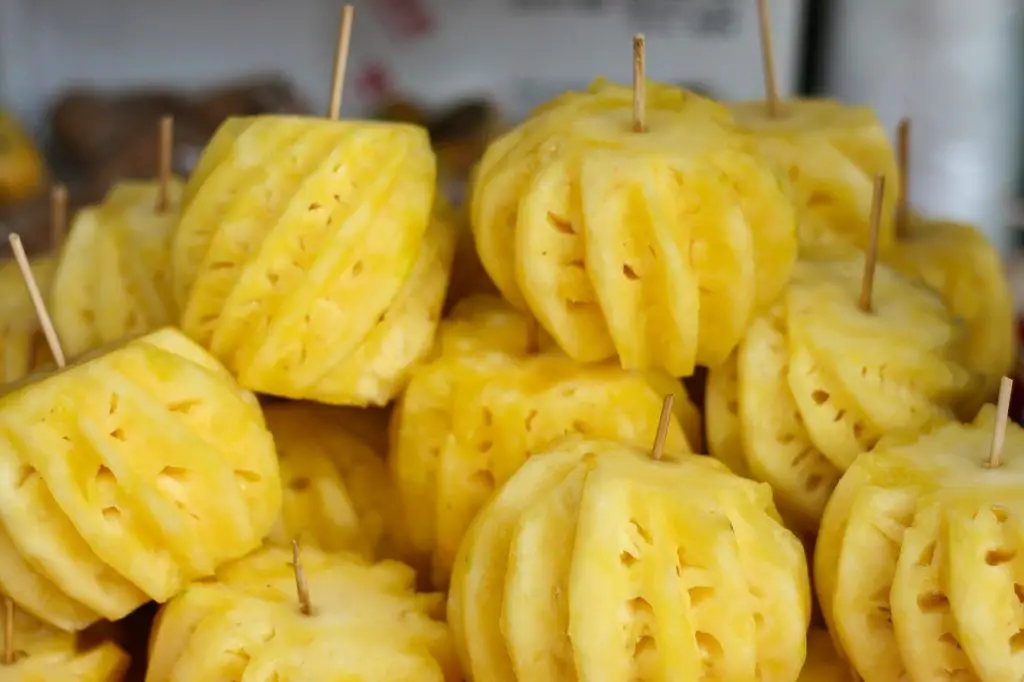
Pineapple, one of the most popular tropical fruits in the world, holds a special place in the heart of Indonesian people.
Known locally as “Nanas,” pineapple is widely cultivated throughout Indonesia, particularly in Java and Bali.
Indonesian pineapples are renowned for their sweetness and succulent texture, making them perfect for use in various culinary dishes, including salads, desserts, such as honey pineapple, and meat dishes.
Whether grilled, baked, or juiced, the tropical flavor of Indonesian fresh pineapple will be a refreshing experience.
Custard Apple (Silik)
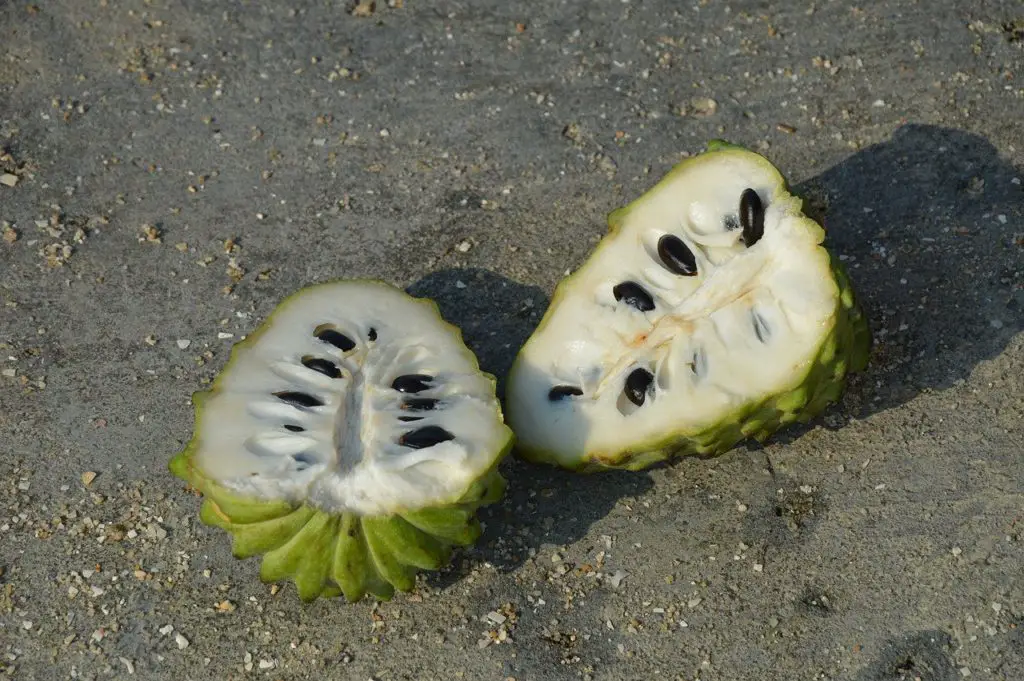
Indonesia is home to many unique fruits, and the custard apple is one of the most delicious.
This fruit boasts a creamy texture that melts in your mouth, making it a true delight to consume.
The custard apple, also known as srikaya or sarikaya, has a green skin easily peeled away to reveal sweet, pulpy flesh with shiny black seeds.
Indonesians often eat this fruit fresh or mix it with sugar and coconut milk to make a refreshing drink.
The custard apple is also believed to have medicinal properties and is used in traditional herbal remedies.
Star Fruit (Belimbing)
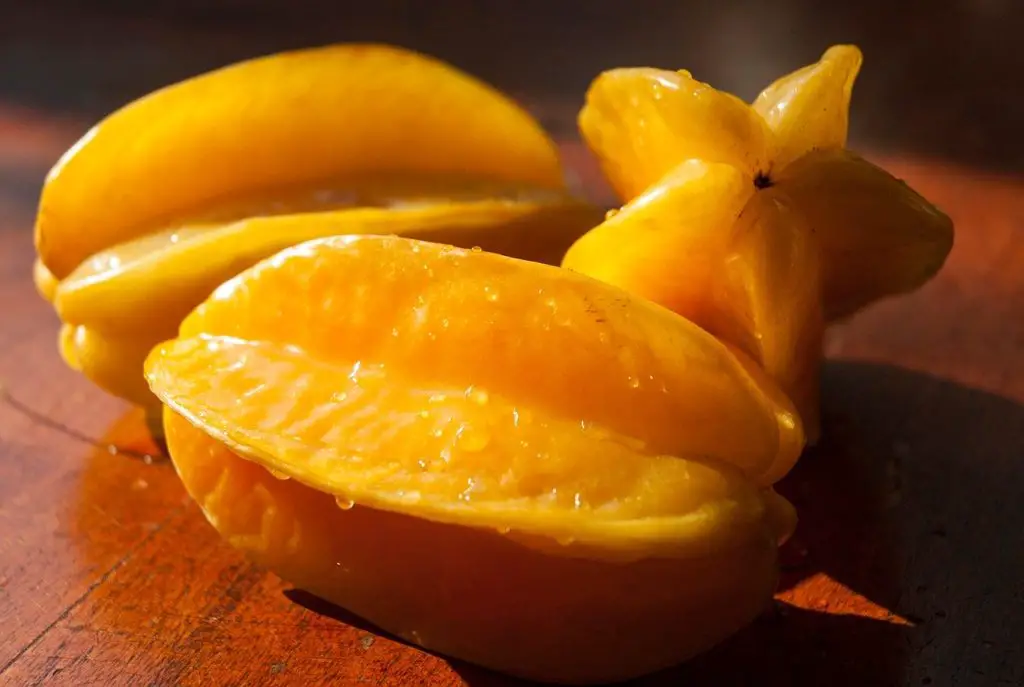
The star fruit is an absolute favorite of all the exotic fruits in Indonesia.
It’s not only visually striking with its signature shape, but it also has a unique tangy flavor that will surely surprise the taste buds.
Locally known as “belimbing,” star fruit is commonly used in various Indonesian dishes, from salads to condiments for grilled meat.
Not only is it delicious, but it’s also packed with essential vitamins and minerals.
Ambarella Fruit (Kedondong)
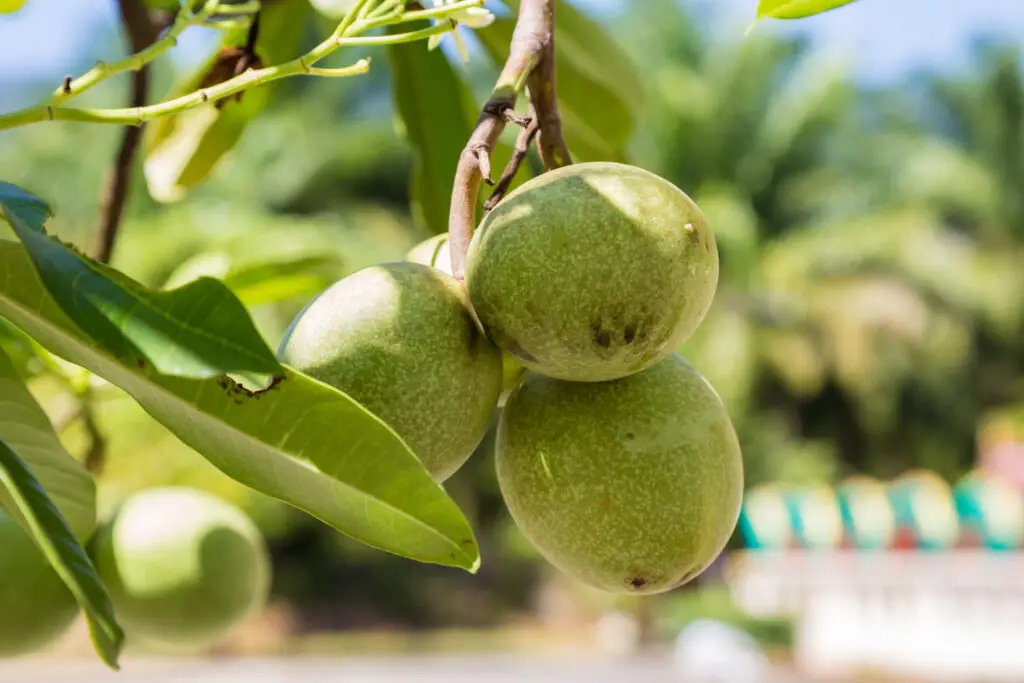
One of the lesser-known treasures in this tropical paradise is the ambarella fruit.
This small, oval-shaped fruit boasts a tangy, slightly sour taste and is often enjoyed as a snack or used in traditional Indonesian cuisine.
With bright yellow skin and firm flesh, the ambarella fruit is packed with essential vitamins and antioxidants, making it a healthy and tasty option for locals and tourists alike.
Mango (Mangga)

Mangoes in Indonesia are delicious fruits that are best enjoyed in the summer months and for a great ingredient in a fruit salad.
Indigenous to the Southeast Asian region, it’s no surprise that Indonesia boasts an impressive variety of mango species, such as the popular Harumanis, the sweet and juicy Jumbo, and the fiberless Arumanis.
The mangoes are not only prized for their sweet and tangy flavor, but also for their versatility in Indonesian cuisine.
From desserts and drinks to savory dishes like rujak (Indonesian fruit salad), mangoes provide a burst of tropical sweetness to any meal.
Guava (Jambu Biji)
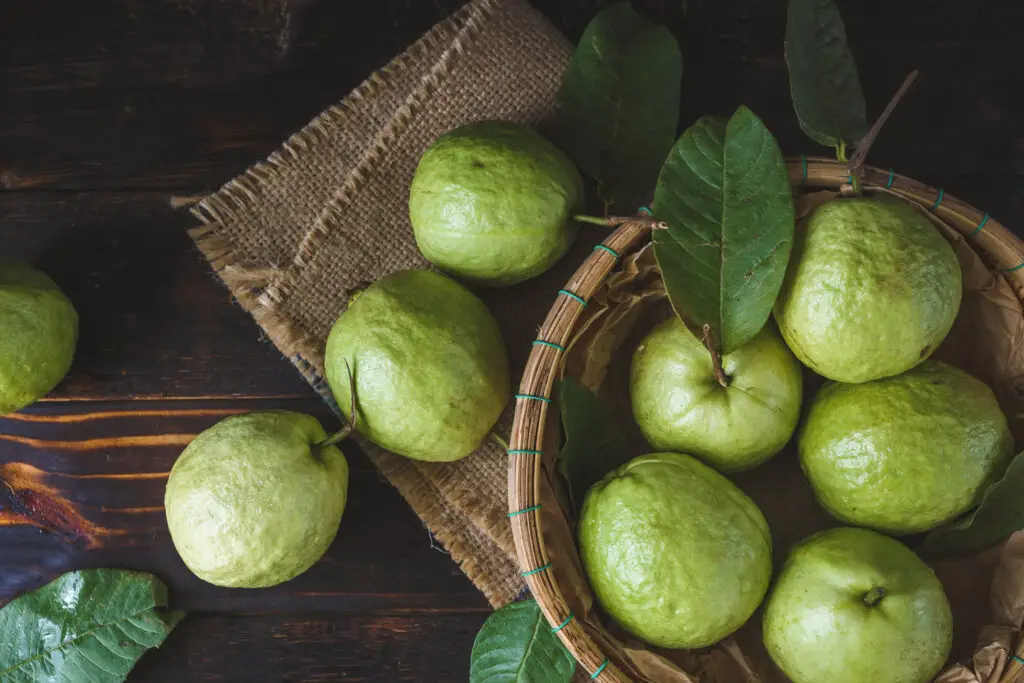
Indonesia is a tropical paradise, and one of its most exotic fruits is guava. This delicious fruit is a common sight in Indonesian markets and is appreciated for its flavor and health benefits.
The guava has a distinct fragrance; when ripe, its flesh is soft and juicy with a sweet and tangy taste.
Indonesia is home to different varieties of guavas, including white, pink, and strawberry guava, each with its unique flavor and texture. Indonesians use guavas in various ways, from jams and jellies to smoothies and desserts.
Dipping this local fruit into chili salt is a typical way to enjoy it.
With its tropical climate, abundant rainfall, and fertile soil, Indonesia provides the perfect conditions for growing delicious and nutritious guavas.
Banana (Pisang)
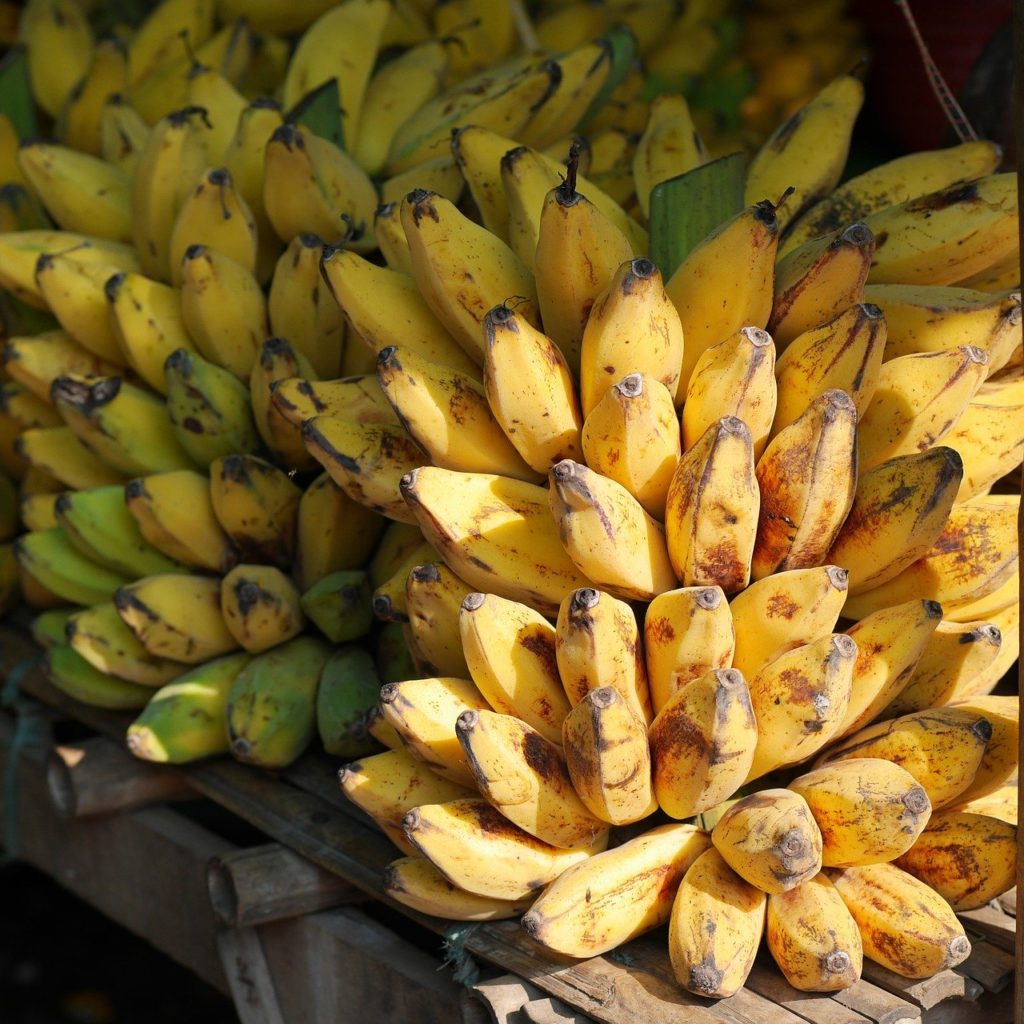
Bananas are a staple fruit in Indonesia and are enjoyed in many ways.
From the sweet and creamy pisang cavendish to the smaller, tangier pisang kepok, there are countless varieties of bananas grown in the country.
Indonesians often eat bananas as a snack on their own or slice them up in their breakfast dishes.
They are also used in traditional Indonesian desserts, such as kolak and pisang goreng (banana fritters).
Bananas are not just beloved for their delicious taste, but also for their nutritional value, including high levels of potassium, vitamin C, and dietary fiber.
Jackfruit (Nangka)

Jackfruit is a must-try fruit when in Indonesia. Known as “nangka”, this edible fruit is one of the largest in the world, with some specimens growing up to a meter long and weighing over 40 kilograms!
But it’s not just the impressive size – the taste is equally amazing. When ripe, the flesh is sweet and juicy, with a tropical flavor unique to jackfruit.
Indonesians love to cook with it, often using it in curries, stews, and stir-fries. Jackfruit seeds can also be eaten as a snack.
But it’s also delicious eaten fresh or dried and can be found in many street markets and grocery stores throughout the country.
Durian (Duria)
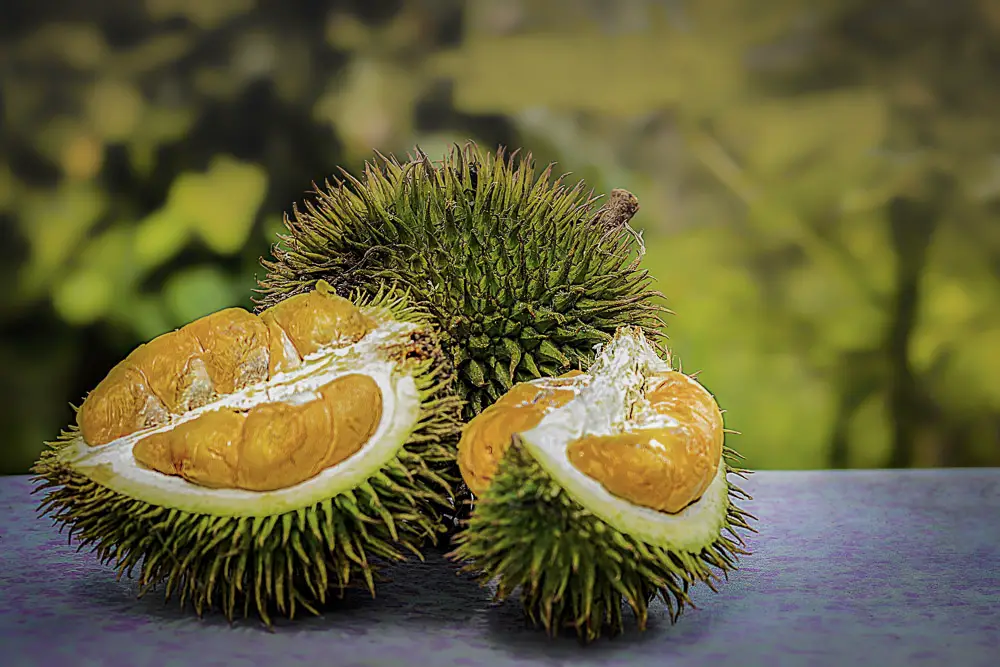
Durian, known locally as the “king of fruits,” is a delicacy in Indonesia. This fruit, grown in tropical and subtropical areas, has a thorny exterior and a pungent odor that some describe as akin to gasoline or rotten onions.
Despite its polarizing scent, many Indonesians adore durian for its creamy, custardy texture and sweet, unique flavor.
In addition to being eaten fresh, durian is also used in a variety of dishes, such as es durian (a refreshing durian ice dessert), dodol durian (a sticky, glutinous rice cake filled with durian paste), and my favorite, durian ice cream.
Durian season in Indonesia is an exciting time for locals and visitors alike, as markets and street vendors offer a bounty of this coveted fruit for all to enjoy.
Tamarind (Asam Java)
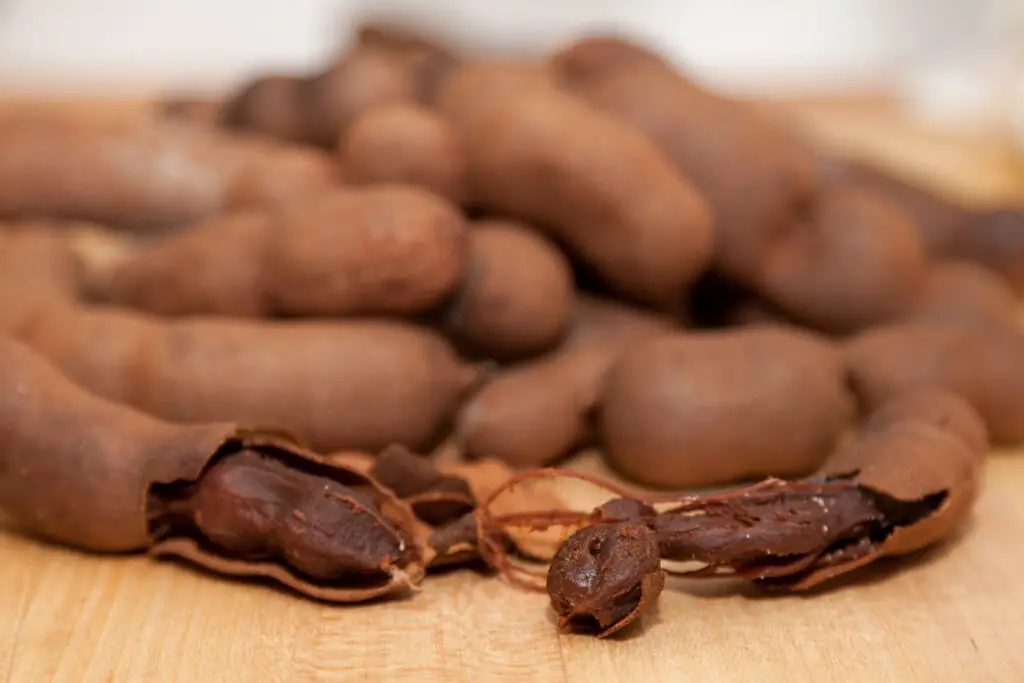
Tamarind, the tangy fruit that adds a depth of sourness to Southeast Asian cuisine, has a special place in Indonesia.
Indonesia’s love affair with tamarind dates back centuries, from being used for medicinal purposes to flavoring traditional dishes like Sayur Asem and Sambel Goreng.
The fruit, which grows on tall trees, is the source of a paste called “asam,” a common ingredient in Indonesian cooking.
Besides, tamarind boasts an impressive nutritional profile, high in vitamins B and C and antioxidants.
Beyond cooking, tamarind has also become an important export commodity in Indonesia, producing thousands of tons of tamarind paste each year.
Mangosteen (Manggis)
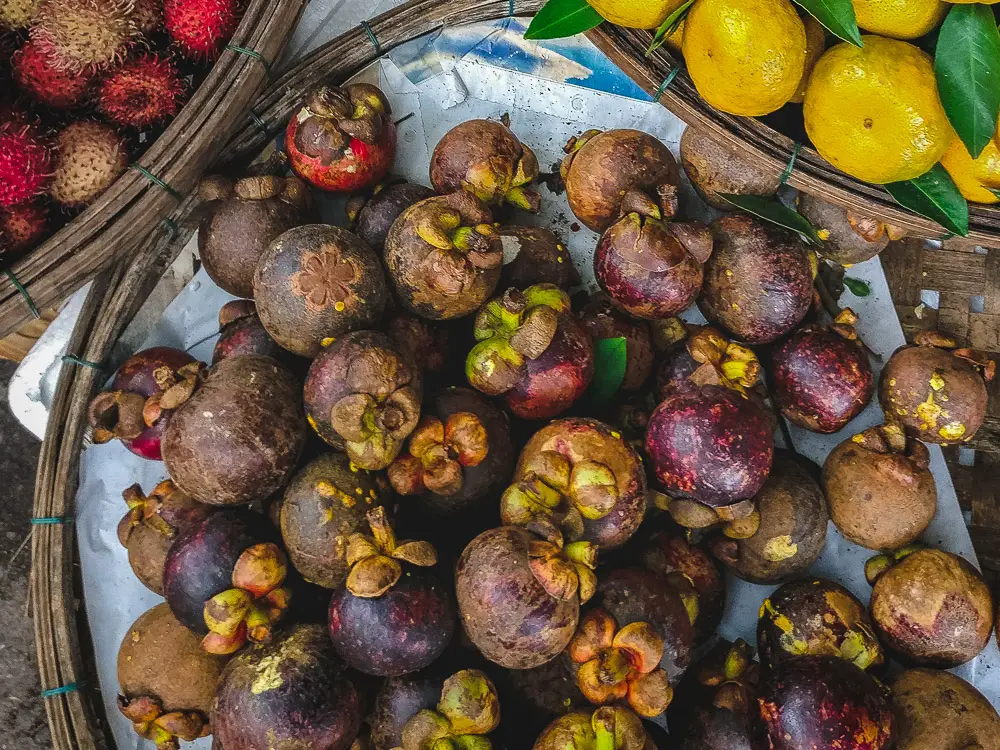
Mangosteen, known locally as manggis, is a tropical fruit that holds a special place in Indonesian cuisine.
Found predominantly in the islands of Sumatra, Sulawesi, and Bali, this round, dark purple fruit is encased in a thick, glossy rind that must be peeled away to reveal its snow-white flesh.
The manggis is prized for its juicy, sweet and sour taste and is commonly eaten raw or used in desserts, drinks, and jams.
In Indonesia, it is believed that consuming mangosteens can help alleviate various health problems, from reducing inflammation to preventing cancer.
Langsat (Duku)
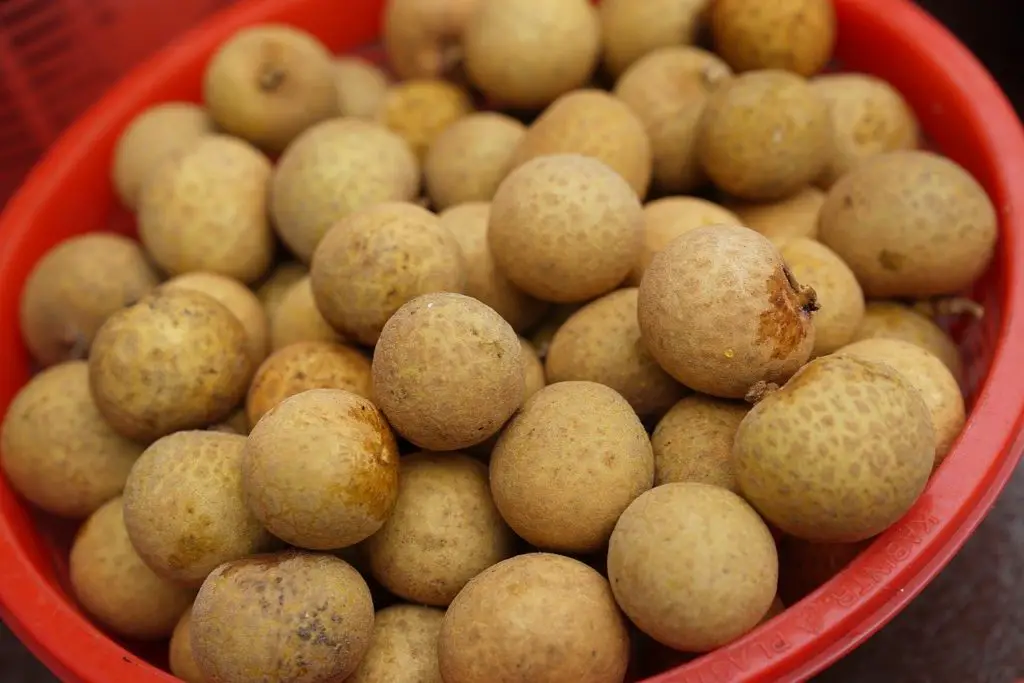
Langsat is a tropical fruit popular in Indonesia, and it’s not hard to see why!
With its glossy yellow thin skin and succulent, juicy flesh, langsat is a tangy and sweet treat everyone can enjoy.
Often referred to as the “duku” fruit by locals, this fruit has a round or oval shape and is known for its sticky texture that can be a bit difficult to peel.
But trust me; it’s worth the effort!
Soursop (Sirsak)
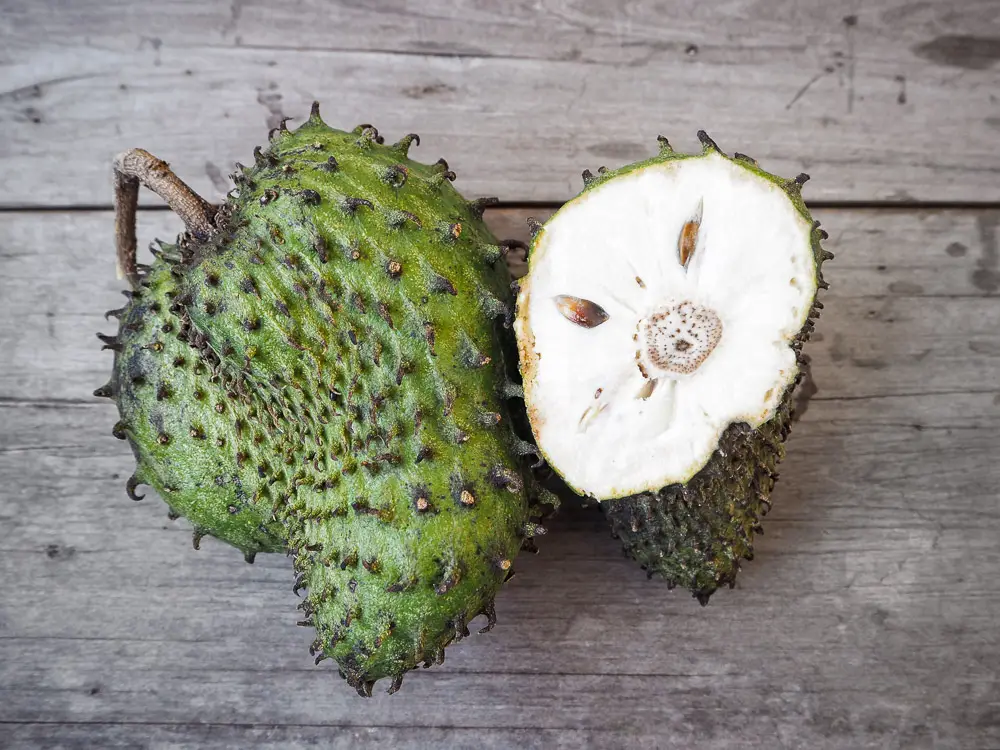
Soursop is a tropical fruit that grows abundantly in Indonesia, and its unique flavor and health benefits have made it a beloved ingredient in Indonesian cuisine.
Soursop is often used in desserts such as ice cream, pudding, and cakes with a sweet and sour taste reminiscent of a mix between a strawberry and a pineapple.
However, it is also a popular ingredient in savory dishes, with many Indonesian chefs incorporating soursop in curries, stews, and even soups.
Besides its delicious taste, soursop is also packed with vitamins, antioxidants, and anti-inflammatory properties, making it a superfood that provides a wide range of health benefits to those who consume it.
Rambutan (Kapulasan)
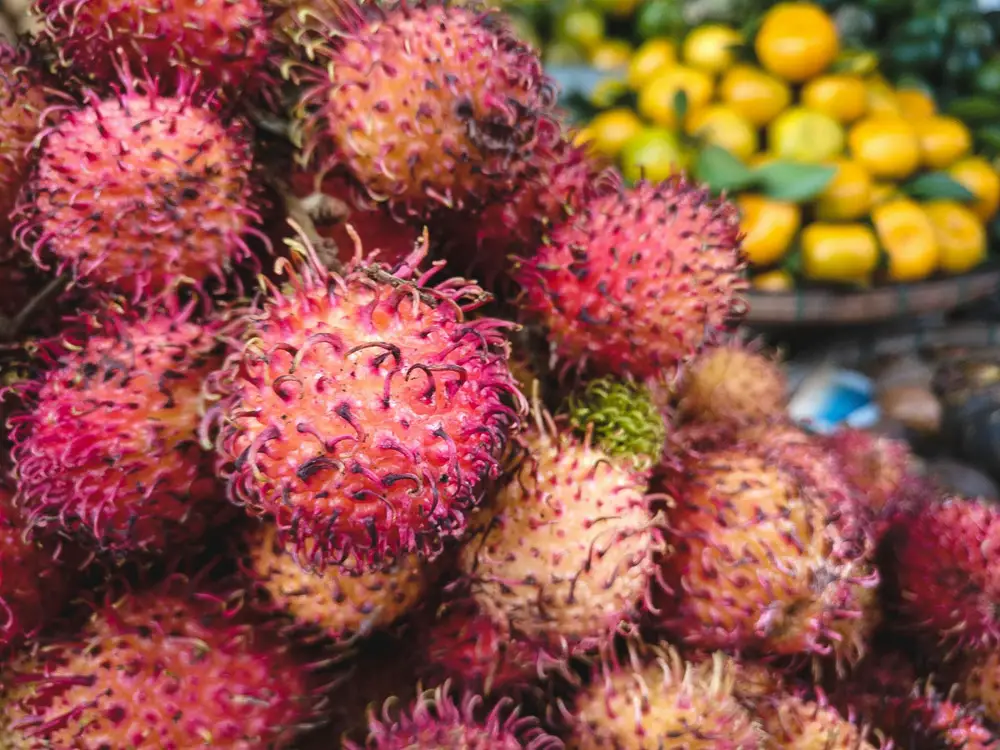
Indonesia is a country rich in tropical fruits, including rambutan. With its spiky red and green outer layer with a soft white fruit inside, it is hard to miss in local markets.
Rambutan, which means “hairy” in Malay, due to the fruit’s hairs, is native to the Indonesian archipelago and is a seasonal fruit that can be found from May to August.
The inside of the fruit is not too dissimilar to longans and lychees.
It is a tasty fruit and has various health benefits, such as promoting healthy skin and aiding in digestion.
Locals often use rambutan flesh in salads, jams, and drinks, and it is also a popular snack.
Papaya (Papaw)
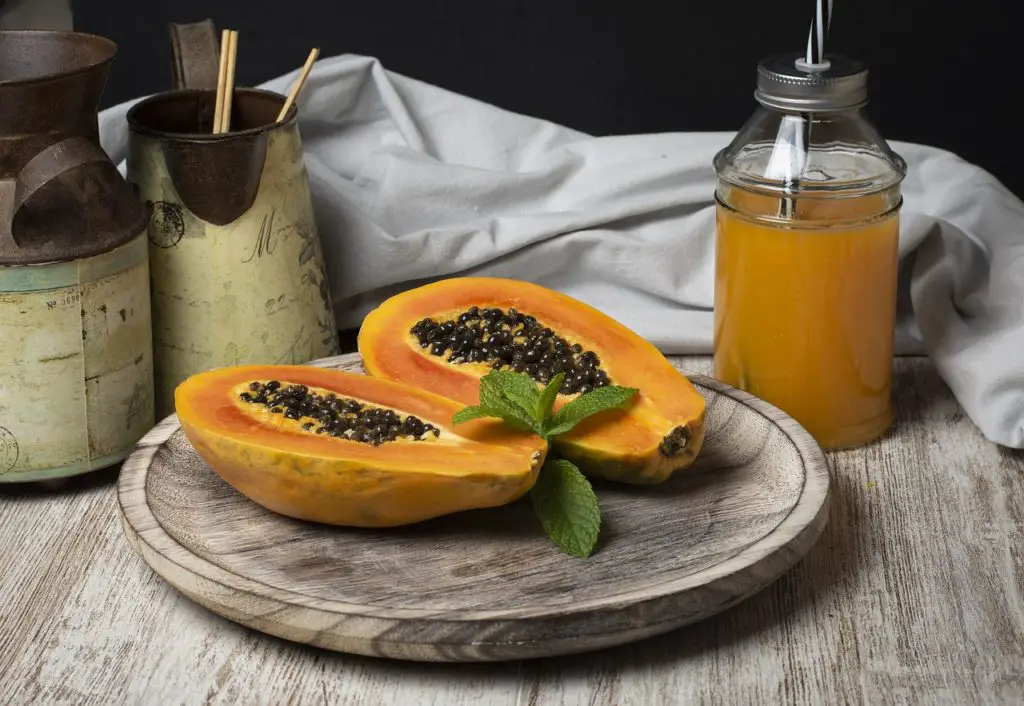
Papaya, a tropical fruit that grows abundantly in Indonesia, has become a staple ingredient in Indonesian cuisine.
These Indonesian fruits have a versatility in cooking that is unmatched, as it can be used to make sweet and savory dishes.
Indonesian papayas are known for their sweet, juicy flesh that bursts with flavor, making them a popular fruit for snacking.
In addition to its delicious taste, papaya has been praised for its health benefits, including digestive aid and immune system support.
Indonesian farmers take great care in cultivating their papaya crops, taking advantage of the country’s rich soil and warm climate.
Whether eaten fresh, cooked in a delicious dish, or enjoyed as a drink, papaya is a beloved fruit that embodies Indonesia’s vibrant flavors.
Fun Fact: Did you know there are more than 13 types of Papayas?
Longan (Lengkeng)
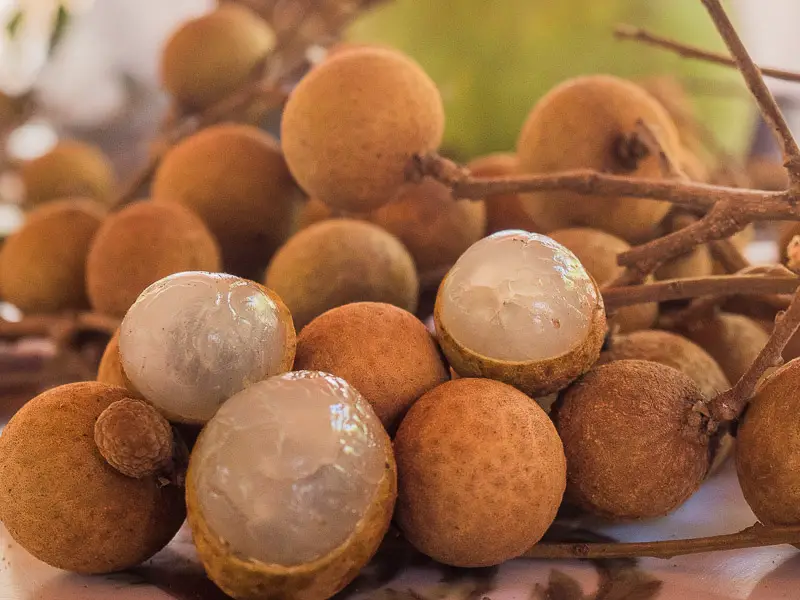
Longan, also known as “dragon eyes,” is a tropical fruit that is highly popular in Indonesia.
This small round fruit has a thin brown skin and a translucent pulp that is juicy and sweet.
Longan is commonly enjoyed fresh as a snack or incorporated into desserts, smoothies, and even traditional Indonesian dishes.
The fruit is also known for its various health benefits, such as improving skin health and boosting the immune system.
So, if you find yourself in Indonesia, try some longan and experience this beloved fruit’s sweet taste and health benefits.
Coconut (Buah Kelapa)
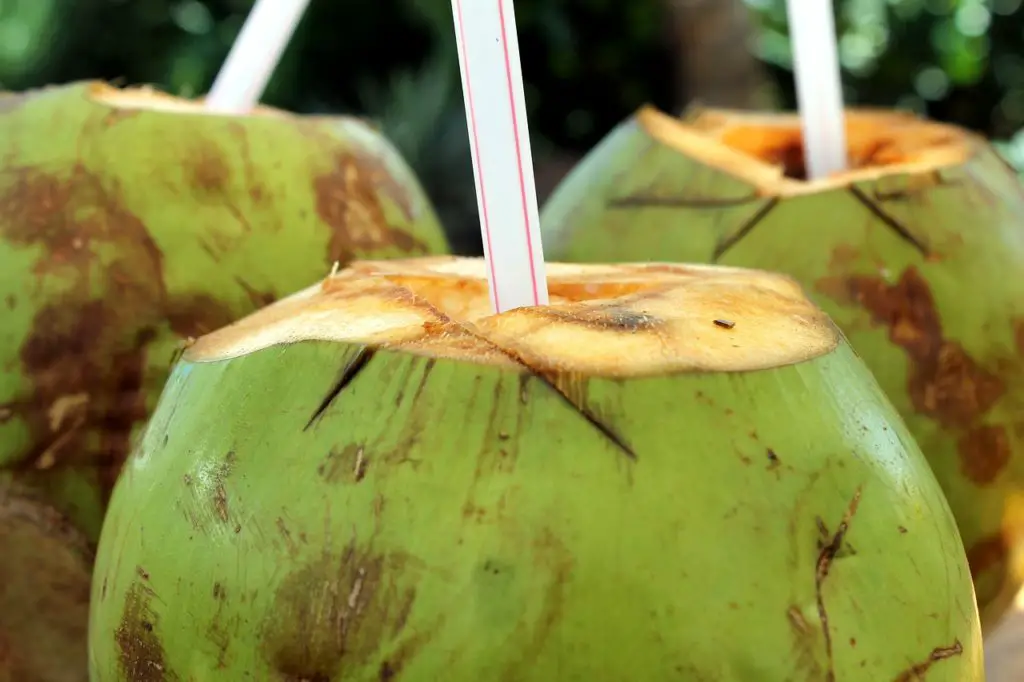
Indonesia is well-known for its delicious culinary offerings, and one ingredient that has played a prominent role in many dishes is the versatile coconut.
With its fragrant scent and unique taste, this fruit is a staple in the Indonesian diet, especially in areas like Bali, where coconut trees are abundant.
The coconut’s meat and milk are widely used in curries, desserts, and drinks, adding richness and depth to these dishes.
Additionally, coconut oil has become a popular ingredient in natural beauty products.
From food to cosmetics, the coconut has made a name for itself in Indonesia’s culture and traditions.
I hope you enjoyed this post about Indonesian fruits. If so, you may be interested in more fruit related posts such as:
- 17 Malaysian Fruits to Try
- Top 20 Fruits in Zanzibar
- 19 African Fruits You Need to Try
- African Pear – The Unique African Fruit
- Vietnamese Star Apple
- Fruits That Start With T
- Fruits That Start With W
- Pomelo vs Grapefruit – What’s The Difference?
FAQ
The most popular fruit in Indonesia is the soursop, followed by rambutan, papaya, longan, and coconut. All these fruits are packed with vitamins, antioxidants, and anti-inflammatory properties that provide a wide range of health benefits to those who consume them. They are also commonly used in Indonesian cuisine to add sweetness and flavor to dishes.

